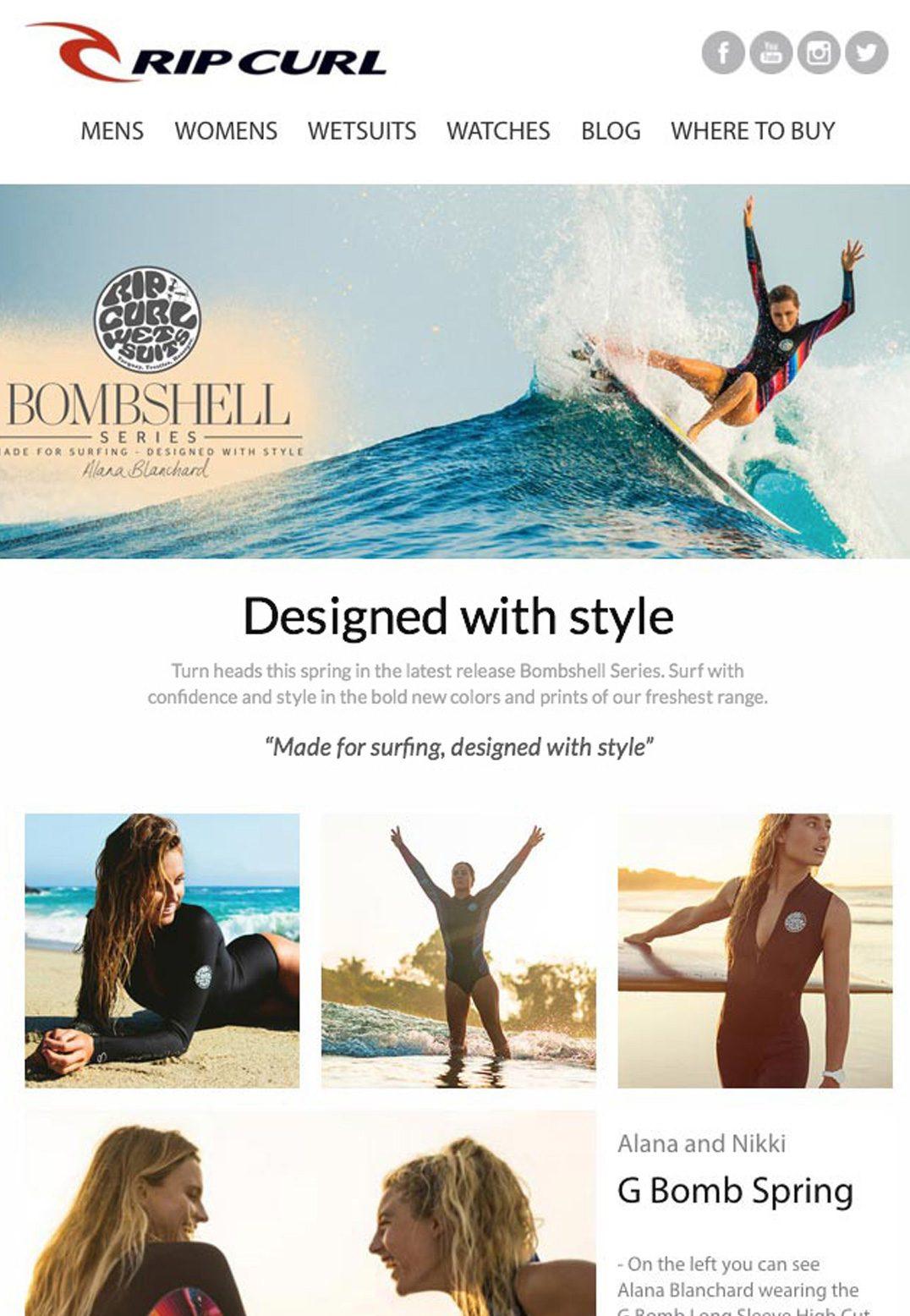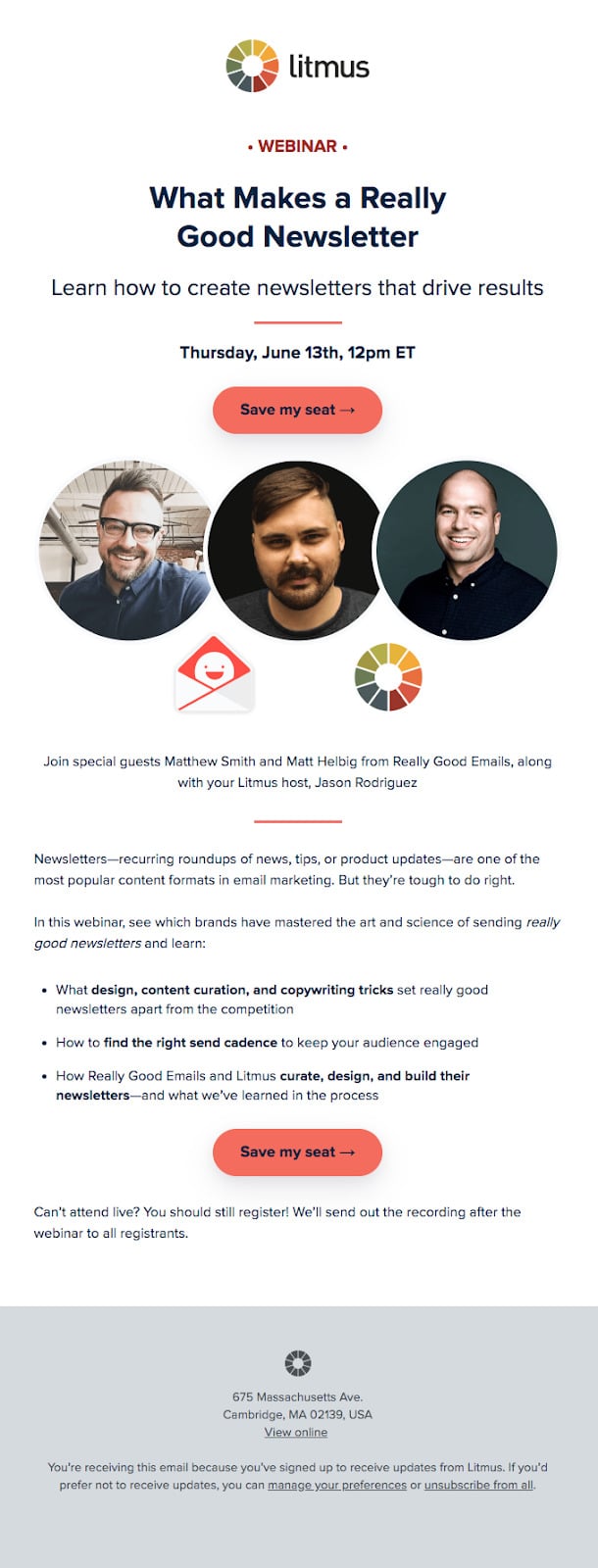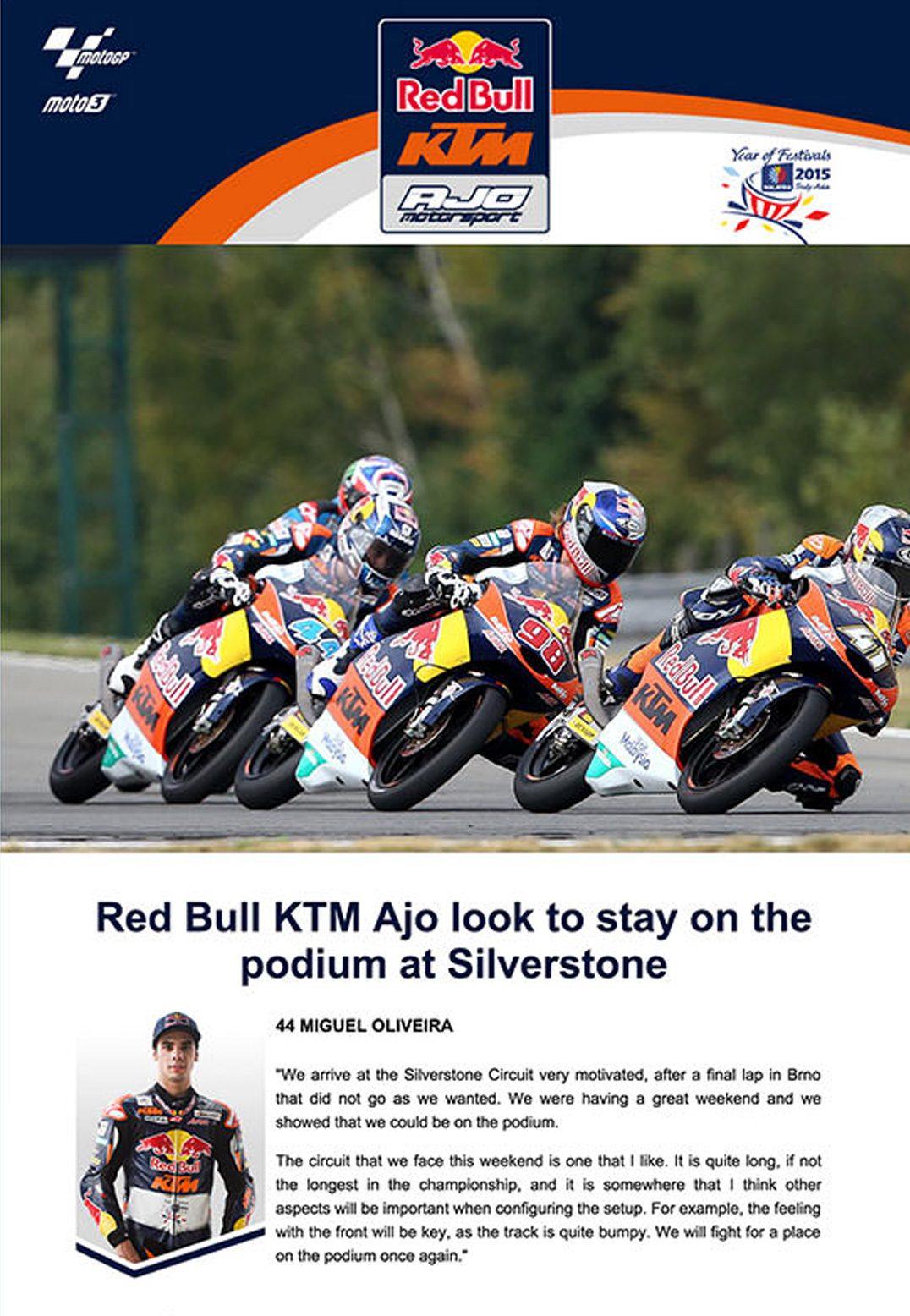Email marketing 101: Time to create your next campaign
There’s a reason email has been the go-to marketing tool for many businesses – it works. However, starting an email marketing campaign from scratch can be quite a daunting task, especially if you’ve never done it before. That’s why we’ve decided to create this resource to help you out.
Don’t worry though, email marketing isn’t as complicated as it may look from the outside. In fact, once you get the hang of it, you’ll discover how interesting it is.
Ready to create campaigns that convert like subscribers into long-term customers?
Source: Campaign Monitor
Before we do, let’s quickly look at why email marketing is still one of the most effective marketing strategies you can have in your toolbox.
Is email marketing still important?
In this world with so many advanced communications channels, why should you even bother with an archaic communication channel like email?
Well, old as it is, email is just like the wheel - it just gets better with each generation. But to prove just why (and how) email is so effective even today, here are four reasons email marketing still works:
-
Email is personal. A person’s inbox is as personal to them as their home is. Being granted access to the inbox enables you to deliver your message directly to the recipient.
-
Offers advanced personalization abilities. When it comes to sending personalized messages, no channel matches to email.
-
Your customers prefer email. A study conducted by Campaign Monitor revealed that customers prefer to communicate with brands via email more than any other channel.
-
You own your email list. One of the biggest reasons email is still king is the fact that it is less prone to changes that affect other channels such as social media. Since you own your email list, algorithm changes or the demise of a platform (remember G+?) won’t affect your campaigns.
Now that you understand how powerful email is, let’s go ahead and look at how you can start and run your first email marketing campaign.
Email marketing 101: How to create a campaign that converts
Ready to create your first (or next) email marketing campaign? Here’s a blueprint you can follow to ensure your campaign is effective:
1. Set your goals.
Before rushing into creating your award-winning campaign, establish your goals. What do you hope to achieve with your email campaign? One good thing about email marketing is that it can help you achieve a lot of your business goals. Here are a few examples to help you out:
-
Increasing brand awareness
-
Growing your customer base
-
Increasing revenue
-
Soliciting donations
-
Announcing new products
-
Retaining customers
The possibilities of what you can achieve with an email marketing campaign are endless. However, you have to decide from the onset what one goal you want to achieve with your strategy.
2. Choose an email marketing service that suits your business.
One of the most important stages of creating a campaign that converts is choosing an email service provider (ESP). Sadly, many businesses gamble when selecting an email service provider. To pick one that fits into your goals, consider these factors:
-
Features. Before settling on an email service provider, make sure it has all the features you need to run a successful email campaign.
-
Ease of use. Nothing is as frustrating as being confused by a tool that is meant to make life easier for you.
-
Integrations. Email is just but one tool in a marketer’s toolbox. As such, it has to integrate well with all other existing platforms.
-
Consider delivery rates. Different email platforms have different delivery rates. Opt for one with 98% or higher.
Once you’ve settled on your email service provider of choice, you can move on to the next step in your journey to create a campaign that moves the needle.
3. Build and grow your email list.
Email list building is an essential aspect of email marketing.
However, buying a ready-made list is a non-starter. Buying an email list will cost you more than money in the long run. Some of the repercussions of buying an email list include:
-
Legal action. Sending emails to people you don’t know is illegal in most countries. A good example is the CAN-SPAM Act in the US.
-
Loss of reputation. Promoting your products to people you haven’t built a relationship with is a good way to attract spam reports.
-
No ROI. Even if the people on your purchased list fit your buyer persona profile, it’s highly unlikely that they will convert. After all, you’re probably not the only person using that list.
So how do you go about growing your own list? The easiest and quickest way to build an engaged email list is by creating a lead magnet that your ideal client will find valuable. Once you’ve created it, offer it in exchange for their email address.
4. Determine the type of campaign you want to send.
Not every email you send should be to peddle your goods or services. There are many different types of campaigns you can send to keep your list engaged and profitable.
Source: Really Good Emails
The content you send will help push your subscribers further into your customer journey. Below are some content examples:
-
Welcome emails: Signed up some new subscribers? Your very first email campaign for them should be a welcome series. This introduces them to your brand and highlights the benefits of opening subsequent emails.
-
Newsletters: A newsletter is written to keep your customers abreast of what’s happening with your brand. However, it is allowed to sneak in some promotions (experts recommend 90% information and 0% promotion).
-
Promotional emails: Most loved by marketers, promotional emails are the ones that are usually used to sell.
-
Product update emails: These are to keep customers informed of new features or upgrades.
5. Create campaign-worthy content.
You’ve set your goals, settled on an email service provider, built a list, and even know what kind of campaign you want to run. Now comes another crucial step – creating your email content.
Source: Campaign Monitor
While simple emails could move your marketing needle a couple of years back, competition has become fierce today. You have to invest a lot in ensuring that your email stands out from the crowd. Of note, here are some important elements of email design you have to nail:
-
Subject line. Your subject line is probably the most important element as it is the one that encourages readers to open your email.
-
Pre-header text. Pre-header text is the message you see right under the subject line. Use it as the bridge between your subject line and body copy. Although you only have a few characters, use them to draw readers into your email.
-
Email copy. Your email copy is where you get to share your information or promotions. Craft it in such a way that your readers feel they are getting advice from a friend.
-
Call-to-action. Every email must have a call-to-action. This is a button or text that nudges your readers to take a specific action.
-
Template design. Every major element of your email is “housed” in an email template. Using the right email template ensures that your email displays beautifully. Make a mistake in choosing your template, however, and you’ll turn off many of your readers.
A well-designed email is definitely a major factor in getting a mouthwatering ROI from your email campaign.
6. Segment your list.
It’s at this stage that your email service provider (if you chose wisely) starts to shine. Segmentation is no longer an option when it comes to email marketing – it’s a must. Segmenting your email list simply means putting subscribers with similar attributes in the same group. Some advantages of segmenting your email list include:
-
Personalization. Segmenting your group enables you to tailor a more personalized experience for your customers.
-
Relevance. As your list grows, your customers will all be at different stages of the customer journey. Segmentation helps you to send relevant content to each individual.
As a result of list segmentation, you will enjoy higher conversion rates and, ultimately, a better ROI from your campaigns.
7. Test your campaign.
Finally, before sending out your campaign to your segmented list, make sure to A/B test it. Create two versions of the same campaign and send them to a small portion of your list. Test to see which converts best to the rest of your list.
Wrap up
There you have it. An easy roadmap to help you create a campaign that you and your customers will both love. To sum it up:
-
Email is still king
-
Have clear goals of what you want your campaign to achieve
-
Choose a reliable email marketing service provider
-
Create campaigns
-
Test you’re the elements of your campaign
For inspiration on your next email campaign, check out our 6 favorite email campaigns. You’ll definitely find a few that will help you create a campaign worthy of an award.
MOST RECENT ARTICLES
Want to engage your audience and grow your brand? Try Emma's robust easy-to-use product today.
















